January
What to Plant
Annuals/Perennials/Wildflowers: Plants that can be added to the garden during the coolest months include alyssum, dianthus, pansy, petunia, viola, and snapdragon. See
- Ask IFAS: Annuals: https://edis.ifas.ufl.edu/topics/annuals
- Ask IFAS: Perennials: https://edis.ifas.ufl.edu/topics/perennials
- Florida Wildflower Foundation: https://www.flawildflowers.org/
Bulbs: Crinum, agapanthus, and gloriosa lily can be planted now. Mulch to protect from cold temperatures. See
- Ask IFAS: Bulbs for Florida: https://edis.ifas.ufl.edu/topics/bulbous_flowers
Camellias: Select and plant camellia this month. Visit local nurseries now for the best selection of colors and forms. See
- Ask IFAS: Camellia: https://edis.ifas.ufl.edu/topics/camellia

Credit: UF/IFAS
Vegetables: Irish potatoes can be planted now. Start with healthy seed pieces purchased from a local nursery or online seed catalog. Continue planting cool-season crops, including broccoli, kale, carrots, and lettuce. See
- Ask IFAS: Vegetable Gardening in Florida: https://edis.ifas.ufl.edu/topics/vegetable_gardening
What to Do
Deciduous fruit: Plant deciduous fruit trees now to give their roots time to develop before the warm, dry spring months. Prune and fertilize existing trees. See
- Temperate Fruit for the Home Landscape: https://trec.ifas.ufl.edu/fruitscapes/temperate.shtml
Cold protection: Be ready to cover tender plants to minimize damage. Frost or freezes are likely this month and next. See
- Ask IFAS: Lawn and Garden Care: Cold Protection and Chilling Damage: https://edis.ifas.ufl.edu/topics/lawn-and-garden-cold
Irrigation: Water plants if temperatures remain higher than normal and rainfall is scarce. See
- Ask IFAS: Lawn and Garden Care: Irrigation: https://edis.ifas.ufl.edu/topics/lawn_and_garden_care_irrigation
Shrubs and trees: Prune non-spring flowering shrubs and trees this month to improve form. See
- Ask IFAS: Lawn and Garden Care: Pruning: https://edis.ifas.ufl.edu/topics/lawn-and-garden-care-pruning
Arbor Day: Celebrate Florida Arbor Day (the third Friday of January) by planting a tree in your yard or community. Consider a hurricane-resistant tree, such as live oak, bald cypress, cabbage palm, or crapemyrtle. See
- Ask IFAS: Arbor Day in Florida: https://edis.ifas.ufl.edu/topics/arbor_day
Crapemyrtle: Remove seed pods, crossing branches, and small twiggy growth to improve the appearance and form of the plant, if desired. Hard pruning is not required. See
- Ask IFAS: Crapemyrtle: https://edis.ifas.ufl.edu/topics/crapemyrtle
Pests: Control persistent scale insects on citrus, shrubs, camellias, and deciduous fruit trees; apply horticultural oil while plants are dormant. See
- Ask IFAS: Lawn and Garden Care: Pest Management: https://edis.ifas.ufl.edu/topics/lawn-garden-pest-management
February
What to Plant
Annuals/Perennials/Wildflowers: Plants that can take a chill include dianthus, pansy, viola, and dusty miller. See
- Ask IFAS: Annuals: https://edis.ifas.ufl.edu/topics/annuals
- Ask IFAS: Perennials: https://edis.ifas.ufl.edu/topics/perennials
- Florida Wildflower Foundation: https://www.flawildflowers.org/
Bulbs: Try dahlia, crinum, and agapanthus. Provide adequate water for establishment and protect them from cold with mulch. See
- Ask IFAS: Bulbs for Florida: https://edis.ifas.ufl.edu/topics/bulbous_flowers
Flowering plants: Many trees and shrubs will be in bloom, including red maple (Acer rubrum) and star magnolia (Magnolia kobus var. stellata). See
- Florida Friendly Landscaping Plant Guide: https://ffl.ifas.ufl.edu/media/fflifasufledu/docs/FFL-Plant-Guide_v030624_web.pdf
Vegetables: Plant potatoes now. Start with healthy seed pieces purchased from a local nursery or online seed catalog. Continue to plant cool-season crops. See
- Ask IFAS publication: Florida Vegetable Gardening Guide: https://edis.ifas.ufl.edu/publication/VH021
What to Do
Palms: Give cold-damaged palms proper care to encourage their recovery. See
- Ask IFAS: Palm Care: https://edis.ifas.ufl.edu/topics/palm-care
Citrus: Avoid pruning until spring. Cold temperatures may still injure citrus. See
- Ask IFAS: Home Citrus Culture: https://edis.ifas.ufl.edu/topics/home_citrus_culture
Roses: Prune roses this month to remove damaged canes and improve the overall form. After pruning, fertilize and apply a fresh layer of mulch. Blooming will begin 8–9 weeks after pruning. See
- Ask IFAS: Roses: https://edis.ifas.ufl.edu/topics/roses
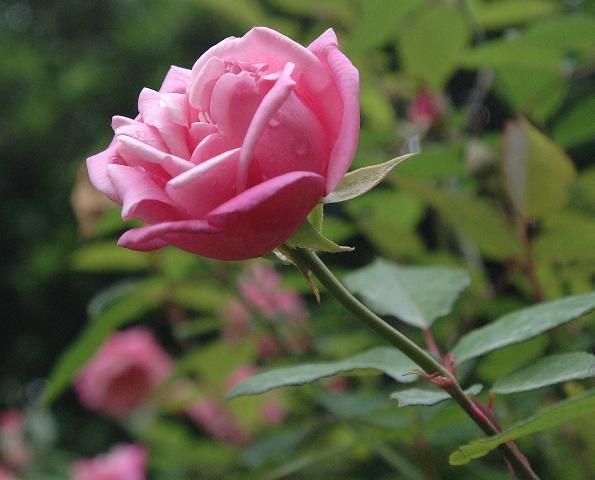
Credit: UF/IFAS Photo by Eric Zamora
Shrubs: Make certain that you know the height and spread of any shrub you plan to install. Not all shrubs are suitable for planting next to homes or under windows. See
- Ask IFAS: Shrubs: https://edis.ifas.ufl.edu/topics/shrubs
- Florida-Friendly Landscaping™ Guide to Plant Selection and Landscape Design: https://ffl.ifas.ufl.edu/homeowners/publications.htm
Lawn: Apply a preemergence weed killer (not a "weed and feed" fertilizer) when temperatures rise to 65°F for 4–5 days to prevent warm-season weeds. Timing is important for good control. See
- Ask IFAS: Lawn and Garden Care: Weed Management: https://edis.ifas.ufl.edu/topics/lawn-garden-weed-management
Citrus and other fruit trees: Fertilize now if not done in January. Frequency and amount of fertilization depend on the age of the tree. See
- Ask IFAS: Home Citrus Culture: https://edis.ifas.ufl.edu/topics/home_citrus_culture
- Temperate Fruit for the Home Landscape: https://trec.ifas.ufl.edu/fruitscapes/temperate.shtml
March
What to Plant
Annuals/Perennials/Wildflowers: Dianthus and other cool-season annuals continue to flourish. Consider planting warm-season annuals such as angelonia, wax begonia, vinca, and zinnia at the end of the month. See
- Ask IFAS: Annuals: https://edis.ifas.ufl.edu/topics/annuals
- Ask IFAS: Perennials: https://edis.ifas.ufl.edu/topics/perennials
- Florida Wildflower Foundation: https://www.flawildflowers.org/
Bulbs: Plant dahlia, canna, and gloriosa bulbs for spring and summer flowering. Provide stakes as needed to support growth. See
- Ask IFAS: Bulbs for Florida: https://edis.ifas.ufl.edu/topics/bulbous_flowers
Herbs: Consider growing edible ginger. Plant rhizomes in well-drained soil in full to part sun. See
- Ask IFAS: Ginger: https://edis.ifas.ufl.edu/topics/ginger
- Ask IFAS: Herbs: https://edis.ifas.ufl.edu/topics/herbs
Vegetables: Begin planting warm-season crops, such as beans, tomatoes, squash, and corn, early in the month for late spring harvest. Protect from frost. See
- Ask IFAS: Vegetable Gardening in Florida: https://edis.ifas.ufl.edu/topics/vegetable_gardening
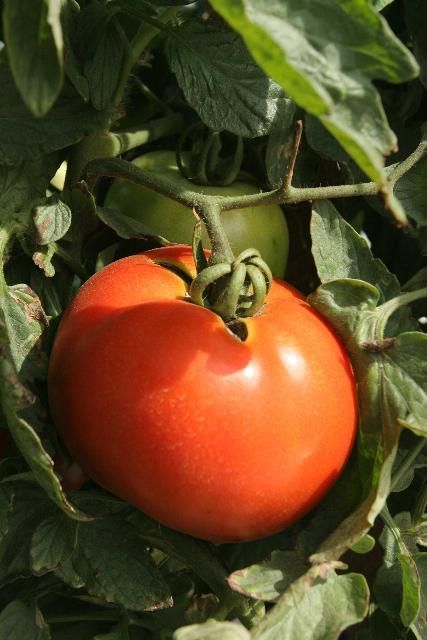
Credit: UF/IFAS Photo by Sally Lanigan
What to Do
Azaleas: Prune azaleas when they have finished blooming to reduce their size and improve their form. See
- Ask IFAS: Azalea: https://edis.ifas.ufl.edu/topics/azalea
Shrubs and trees: Prune when the dormant season ends and new growth begins. See
- Ask IFAS: Lawn and Garden Care: Pruning: https://edis.ifas.ufl.edu/topics/lawn-and-garden-care-pruning
Palms and shrubs: Fertilize palms, azaleas, camellias, and other ornamental shrubs if needed. Choose a fertilizer in which at least 30% of its nitrogen is slow release. See
- Ask IFAS: Palm Nutrient Management: https://edis.ifas.ufl.edu/topics/palm-nutrient-management
- Ask IFAS: Lawn & Garden Care: Fertilization: https://edis.ifas.ufl.edu/topics/lawn-garden-fertilization
Irrigation: Check your sprinkler system for problems such as broken or misaligned spray heads. See
- Ask IFAS: Lawn and Garden Care: Irrigation: https://edis.ifas.ufl.edu/topics/lawn_and_garden_care_irrigation
April
What to Plant
Annuals/Perennials/Wildflowers: New varieties of coleus do well in sun or shade and provide vivid colors and patterns for months. See
- Ask IFAS: Annuals: https://edis.ifas.ufl.edu/topics/annuals
- Ask IFAS: Perennials: https://edis.ifas.ufl.edu/topics/perennials
- Florida Wildflower Foundation: https://www.flawildflowers.org/
Bulbs: This is an ideal time to plant many bulbs. Consider blood lily, caladium, or canna. Louisiana iris and others make beautiful cut flowers. See
- Ask IFAS: Bulbs for Florida: https://edis.ifas.ufl.edu/topics/bulbous_flowers
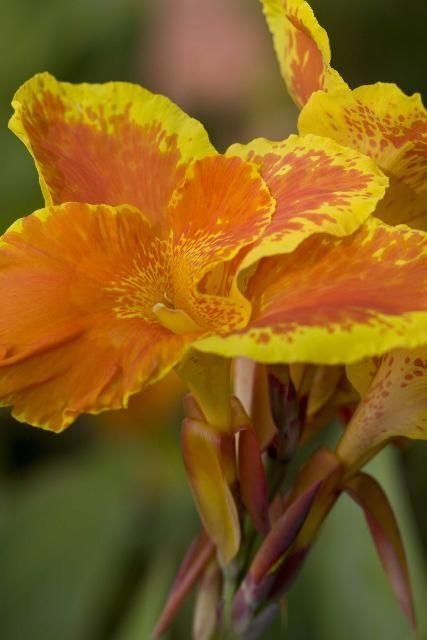
Credit: UF/IFAS
Herbs: Plant heat-loving herbs, including basil, oregano, sage, Mexican tarragon, and rosemary. See
- Ask IFAS: Herbs: https://edis.ifas.ufl.edu/topics/herbs
Vegetables: Continue planting warm-season crops. Mulch well to prevent weeds and provide irrigation if rainfall is lacking. See
- Ask IFAS: Vegetable Gardening in Florida: https://edis.ifas.ufl.edu/topics/vegetable_gardening
What to Do
Pests: Monitor landscape plants for aphids that feed on tender new growth. See
- Ask IFAS: Lawn and Garden Care: Pest Management: https://edis.ifas.ufl.edu/topics/lawn-garden-pest-management
Beneficials: Identify and conserve beneficial insects. These insects should be encouraged in your yard! See
- Beneficial Insects: https://edis.ifas.ufl.edu/topic_beneficial_insects
Perennials and bulbs: Divide clumps of bulbs, ornamental grasses, or herbaceous perennials to expand or rejuvenate garden beds or to pass along to friends. See
- Ask IFAS: Bulbs for Florida: https://edis.ifas.ufl.edu/topics/bulbous_flowers
- Ask IFAS: Perennial Landscape Plants: https://edis.ifas.ufl.edu/topic_perennials
Lawn insects: Rule out cultural problems, such as lack of water, that resemble insect damage before applying a pesticide. See
- Ask IFAS: Lawn and Garden Care: Pest Management: https://edis.ifas.ufl.edu/topics/lawn-garden-pest-management
Lawns: Apply fertilizer after new growth has started—usually early April in north-central Florida and mid-April for north Florida and the panhandle. See
- Ask IFAS: Lawn & Garden Care: Fertilization: https://edis.ifas.ufl.edu/topics/lawn-garden-fertilization
Shrubs: Choose from a wide variety of shrubs to add to the landscape now. See
- Ask IFAS: Shrubs: https://edis.ifas.ufl.edu/topics/shrubs
- Florida-Friendly Plant Guide: https://ffl.ifas.ufl.edu/media/fflifasufledu/docs/FFL-Plant-Guide_v030624_web.pdf
Trees: Consider planting a spring-blooming tree, such as fringetree (Chionanthus virginicus), Carolina Silverbell (Halesia carolina), or redbud (Cercis canadensis). See
- Florida-Friendly Plant Guide: https://ffl.ifas.ufl.edu/media/fflifasufledu/docs/FFL-Plant-Guide_v030624_web.pdf
Mulch: Add mulch to minimize weeds and conserve moisture during dry weather. Organic mulches break down and add nutrients to the soil. See
- Ask IFAS: Lawn and Garden: Mulches: https://edis.ifas.ufl.edu/topics/lawn-garden-mulches
May
What to Plant
Annuals/Perennials/Wildflowers Plants that can take summer heat include salvia, angelonia, wax begonia, ornamental pepper, vinca, pentas, beach sunflower. See
- Ask IFAS: Annuals: https://edis.ifas.ufl.edu/topics/annuals
- Ask IFAS: Perennials: https://edis.ifas.ufl.edu/topics/perennials
- Florida Wildflower Foundation: https://www.flawildflowers.org/
Bulbs: Planting early-, mid-, and late-blooming varieties of daylily ensures months of color from these low-maintenance plants. See
- Ask IFAS publication: Daylilies for Florida: https://edis.ifas.ufl.edu/publication/EP006
- Ask IFAS: Bulbs for Florida: https://edis.ifas.ufl.edu/topics/bulbous_flowers
Herbs: Continue to plant heat-loving herbs, including basil, oregano, Mexican tarragon, and rosemary. See
- Ask IFAS: Herbs: https://edis.ifas.ufl.edu/topics/herbs
Vegetables: Swiss chard will take the heat as well as okra, southern pea, and sweet potato. See
- Ask IFAS: Vegetable Gardening in Florida: https://edis.ifas.ufl.edu/topics/vegetable_gardening
What to Do
Pests: Insects become more active in warm weather. Watch for thrips, scales, and mites on ornamental plants. See
- Ask IFAS: Lawn and Garden Care: Pest Management: https://edis.ifas.ufl.edu/topics/lawn-garden-pest-management
Gardenias: Yellowing of older leaves is usually normal; yellowing of new growth usually indicates a micronutrient deficiency. See
- Ask IFAS publication: Gardenias at a Glance: https://edis.ifas.ufl.edu/ep338
Oleanders: Inspect chewed or ragged leaves for oleander caterpillars at work. See
- Ask IFAS: Oleander Pest Management: https://edis.ifas.ufl.edu/topics/oleander-pest-management
Lawn insects: Watch for damage from chinch bugs in St. Augustinegrass and begin scouting for newly hatched mole crickets in bahiagrass lawns. See
- Ask IFAS: Insect Management in Your Florida Lawn: https://edis.ifas.ufl.edu/topics/insect_management_in_your_florida_lawn
- Ask IFAS: Lawn and Garden Care: Pest Management: https://edis.ifas.ufl.edu/topics/lawn-garden-pest-management
Tomatoes: Watch for pests, disease, and nutritional disorders on tomato plants. See
- Ask IFAS: Tomato Gardening: https://edis.ifas.ufl.edu/topics/tomato-gardening
New plants: Produce more plants by air layering, grafting, division, or cuttings. See
- Ask IFAS: Lawn and Garden Plants: Seeds and Propagation: https://edis.ifas.ufl.edu/topics/lawn-garden-propagation
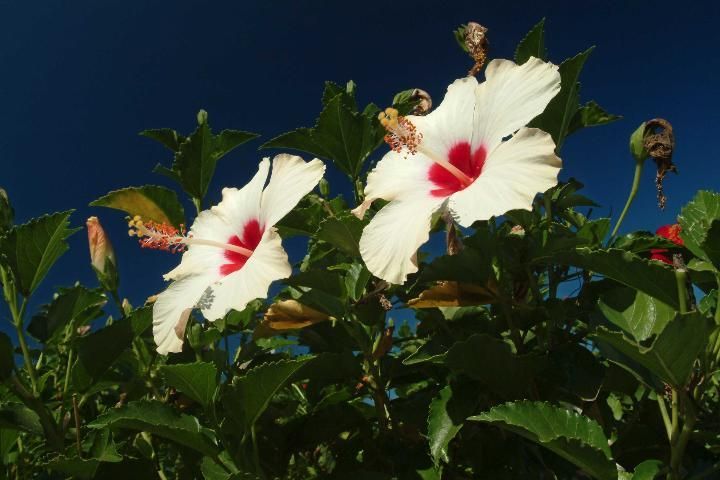
Credit: UF/IFAS Photo by Marisol Amador
Trees: Prepare for hurricane season by checking trees for damaged or weak branches and pruning if needed. Hire an ISA-certified arborist. See
- International Society of Arboriculture: http://isa-arbor.com/
- Ask IFAS: Lawn and Garden Care: Pruning: https://edis.ifas.ufl.edu/topics/lawn-and-garden-care-pruning
Lawn Mowing: Encourage healthy growth and discourage insects, weeds, and diseases by mowing correctly. See
- Ask IFAS: Mowing: https://edis.ifas.ufl.edu/topics/mowing
June
What to Plant
Annuals/Perennials/Wildflowers: Annuals that can take full sun during hot summer months include celosia, portulaca, vinca, and some coleus. See
- Ask IFAS: Annuals: https://edis.ifas.ufl.edu/topics/annuals
- Ask IFAS: Perennials: https://edis.ifas.ufl.edu/topics/perennials
- Florida Wildflower Foundation: https://www.flawildflowers.org/
Palms: Summer's warm, rainy weather is the perfect time to plant palms. Make sure not to cover the trunk with soil. See
- Ask IFAS: Palms: https://edis.ifas.ufl.edu/topics/palms
Herbs: Plant heat-loving herbs, including basil, Mexican tarragon, and rosemary. Pinch back regularly to prevent flowering and enhance branching. See
- Ask IFAS: Herbs: https://edis.ifas.ufl.edu/topics/herbs
Vegetables: Plant okra, southern pea, and sweet potato. See
- Ask IFAS: Vegetable Gardening in Florida: https://edis.ifas.ufl.edu/topics/vegetable_gardening
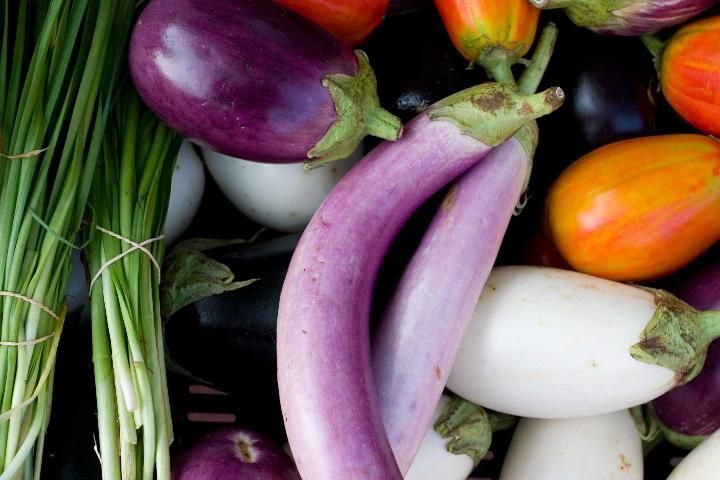
Credit: UF/IFAS Photo by Tyler Jones
What to Do
Pests: Monitor the landscape weekly for harmful insects. Knowing which insects commonly attack a plant can aid in identification and treatment. See
- Ask IFAS: Lawn and Garden Care: Pest Management: https://edis.ifas.ufl.edu/topics/lawn-garden-pest-management
Irrigation: If rainfall has been lacking, watch for drought stress and water as needed. See
- Ask IFAS: Lawn and Garden Care: Irrigation: https://edis.ifas.ufl.edu/topics/lawn_and_garden_care_irrigation
Palms and cycads: Watch for nutrient deficiencies or environmental problems with palms and correct using an appropriate treatment. See
- Ask IFAS: Palm Nutritient Management: https://edis.ifas.ufl.edu/topics/palm-nutrient-management
Summer-flowering shrubs: Prune lightly during the warmer months to encourage more branching and blooming. Azaleas can still be pruned in June without removing next spring's flower buds. See
- Ask IFAS: Lawn and Garden Care: Pruning: https://edis.ifas.ufl.edu/topics/lawn-and-garden-care-pruning
Fertilizer Bans: Certain municipalities in north Florida prohibit the application of fertilizer to lawns and/or landscape plants during the summer rainy season (June–September). See if such an ordinance exists in your area. See
- Florida-Friendly Landscaping™ Program Fertilizer Ordinances App: https://ffl.ifas.ufl.edu/resources/apps/fertilizer-ordinances/
Lawns: Yellow and brown patches in St. Augustinegrass can be caused by chinch bugs, disease, or lack of water. Take time to determine the cause so your remedy is effective. Rejuvenate areas where grass does not grow well by replacing it with a more adapted turf or groundcover. See
- Ask IFAS: Lawn and Garden Care: Pest Management: https://edis.ifas.ufl.edu/topics/lawn-garden-pest-management
- Florida-Friendly Landscaping™ Guide to Plant Selection & Landscape Design: https://ffl.ifas.ufl.edu/homeowners/publications.htm
July
What to Plant
Annuals/Perennials/Wildflowers: As the heat continues, water when needed to keep the soil evenly moist. See
- Ask IFAS: Annuals: https://edis.ifas.ufl.edu/topics/annuals
- Ask IFAS: Perennials: https://edis.ifas.ufl.edu/topics/perennials
- Florida Wildflower Foundation: https://www.flawildflowers.org/
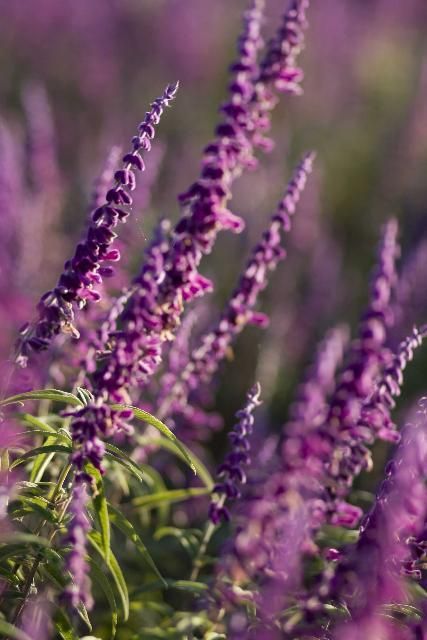
Credit: UF/IFAS Photo by Tyler Jones
Bulbs: Butterfly lily, gladiolus, and society garlic can be planted during the middle of summer. See
- Ask IFAS: Bulbs for Florida: https://edis.ifas.ufl.edu/topics/bulbous_flowers
Palms: Continue planting palms while the rainy season is in full swing. Support large palms with braces for 6–8 months after planting. Nails should not be driven directly into a palm trunk. See
- Ask IFAS: Palms: https://edis.ifas.ufl.edu/topics/palms
Vegetables: Start your tomato and Halloween pumpkin seeds! Cucumbers, peppers, and southern peas can also be planted now. Watch for insects and disease symptoms. See
- Ask IFAS: Vegetable Gardening in Florida: https://edis.ifas.ufl.edu/topics/vegetable_gardening
What to Do
Lawns: Determine the cause of any lawn problems before taking action. If an insect is the culprit, treat only the affected area. Rule out disease or sprinkler malfunction. See
- Ask IFAS: Lawn and Garden Care: Pest Management: https://edis.ifas.ufl.edu/topics/lawn-garden-pest-management
- Florida-Friendly Landscaping™ Guide to Plant Selection & Landscape Design: https://ffl.ifas.ufl.edu/homeowners/publications.htm
Fertilizer Bans: Certain municipalities in north Florida prohibit the application of fertilizer to lawns and/or landscape plants during the summer rainy season (June–September). See if such an ordinance exists in your area. See
- Florida-Friendly Landscaping™ Program Fertilizer Ordinances App: https://ffl.ifas.ufl.edu/resources/apps/fertilizer-ordinances/
Vegetable garden: Use summer heat to solarize garden soil for fall planting. It takes 4–6 weeks to kill weeds, disease, and nematodes, so start now. See
- Ask IFAS: Soil Solarization: https://edis.ifas.ufl.edu/topics/soil_solarization
Azaleas: Flower buds have formed. Prune no later than mid-July to protect next spring's bloom. See
- Ask IFAS: Azalea: https://edis.ifas.ufl.edu/topics/azalea
Irrigation: Install an inexpensive rain shutoff device to conserve water and save money. If one is already installed, check that it is operating properly. See
- Ask IFAS: Lawn and Garden Care: Irrigation: https://edis.ifas.ufl.edu/topics/lawn_and_garden_care_irrigation
Trees: Prepare for hurricane season by checking trees for damaged or weak branches and pruning if needed. Hire an ISA-certified arborist. See
- International Society of Arboriculture: https://www.treesaregood.org/findanarborist
Pests on ornamental plants: Inspect for caterpillars on trees and shrubs. Large trees can normally withstand caterpillar feeding, but specimen shrubs may need treatment if damage is extensive. See
- Ask IFAS: Lawn and Garden Care: Pest Management: https://edis.ifas.ufl.edu/topics/lawn-garden-pest-management
Peach and nectarine trees: Consider planting one of the many new peach and nectarine cultivars that grow well in North Florida. Newly planted trees should be fertilized now. Apply 1/2 lb. per tree of 8-8-8 fertilizer. See
- FruitScapes: Temperate Fruit Crops: https://trec.ifas.ufl.edu/fruitscapes/temperate.shtml
August
What to Plant
Annuals/Perennials/Wildflowers: The hottest days of summer limit planting now to heat-tolerant vinca, gaillardia, bulbine, coleus, and vinca. See
- Ask IFAS: Annuals: https://edis.ifas.ufl.edu/topics/annuals
- Ask IFAS: Perennials: https://edis.ifas.ufl.edu/topics/perennials
- Florida Wildflower Foundation: https://www.flawildflowers.org/
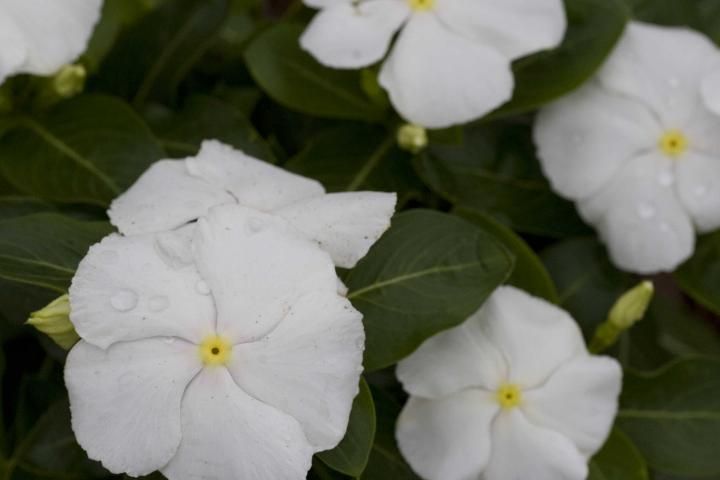
Credit: UF/IFAS Photo by Tyler Jones
Bulbs: Aztec lily, butterfly lily, walking iris, and spider lily can be planted any time of the year, even late summer. See
- Ask IFAS: Bulbs for Florida: https://edis.ifas.ufl.edu/topics/bulbous_flowers
Herbs: Herbs that can be planted from plants (not seeds) include bay laurel, ginger, Mexican tarragon, and rosemary. See
- Ask IFAS: Herbs: https://edis.ifas.ufl.edu/topics/herbs
Vegetables: Many cool-season crops can be started now as well as a final crop of warm-season vegetables such as lima beans, cucumbers, eggplant, and peppers. Tomatoes can also be planted for the fall garden. See
- Ask IFAS: Vegetable Gardening in Florida: https://edis.ifas.ufl.edu/topics/vegetable_gardening
What to Do
Lawns: Determine the cause of any damage to the lawn so the proper remedy is used. Damage from insects, disease, or irrigation failure can produce similar symptoms. Use a sharp mower blade and only remove a third of the grass blade to reduce stress on the lawn. See
- Ask IFAS: Lawn and Garden Care: Pest Management: https://edis.ifas.ufl.edu/topics/lawn-garden-pest-management
- Florida-Friendly Landscaping™ Guide to Plant Selection & Landscape Design: https://ffl.ifas.ufl.edu/homeowners/publications.htm
- Ask IFAS: Insect Management in Your Florida Lawn: https://edis.ifas.ufl.edu/topics/insect_management_in_your_florida_lawn
Fertilizer Bans: Certain municipalities in north Florida prohibit the application of fertilizer to lawns and/or landscape plants during the summer rainy season (June–September). See if such an ordinance exists in your area. See
- Florida-Friendly Landscaping™ Program Fertilizer Ordinances App: https://ffl.ifas.ufl.edu/resources/apps/fertilizer-ordinances/
Palms: Check older palm fronds for yellowing as it may indicate a magnesium or potassium deficiency. Apply an appropriate palm fertilizer. See
- Ask IFAS: Palm Nutrient Management: https://edis.ifas.ufl.edu/topics/palm-nutrient-management
Poinsettias: Pinch back poinsettias and mums before the end of the month to allow time for buds to form for winter bloom. See
- Ask IFAS: Poinsettia: https://edis.ifas.ufl.edu/topics/poinsettia
Ornamental plants: Rapid growth and leaching rains may result in nutrient deficiencies in some plants. See
- Ask IFAS: Lawn and Garden Plants: Nutrient Deficiencies: https://edis.ifas.ufl.edu/topics/lawn-garden-nutrient-deficiencies
Annuals and Perennials: Remove spent blooms, cut back, and fertilize flowering annuals and perennials to extend the season into the fall months.
September
What to Plant
Annuals/Perennials/Wildflowers: Try ageratum, celosia, zinnia, and wax begonia for color into fall. See
- Ask IFAS: Annuals: https://edis.ifas.ufl.edu/topics/annuals
- Ask IFAS: Perennials: https://edis.ifas.ufl.edu/topics/perennials
- Florida Wildflower Foundation: https://www.flawildflowers.org/
Bulbs: Add color, texture, and pattern to the garden with the many varieties of elephant's ear (Alocasia spp.), calla, narcissus, and zephyr lily. See
- Ask IFAS: Bulbs for Florida: https://edis.ifas.ufl.edu/topics/bulbous_flowers
Herbs: Plant Mexican tarragon, mint, rosemary, and basil. See
- Ask IFAS: Herbs: https://edis.ifas.ufl.edu/topics/herbs
Vegetables: It is time to establish strawberry plants. Other veggies to plant now are broccoli, carrot, cabbage, collards, and many others. See
- Ask IFAS publication: Growing Strawberries in the Florida Home Garden: https://edis.ifas.ufl.edu/publication/HS403
- Ask IFAS: Vegetable Gardening in Florida: https://edis.ifas.ufl.edu/topics/vegetable_gardening
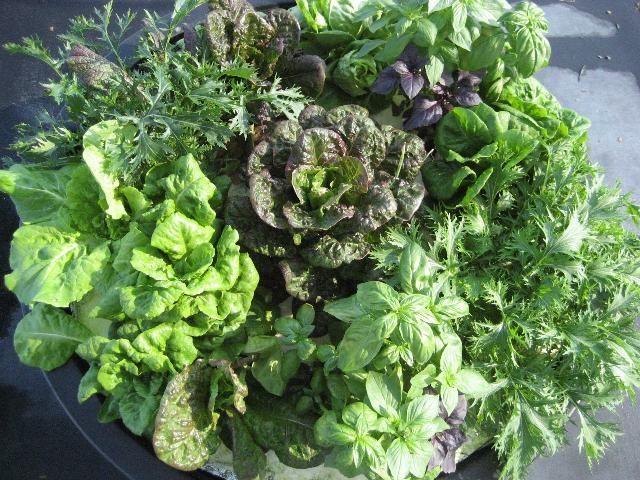
Credit: UF/IFAS
What to Do
Lawn insects: Continue to monitor the lawn for signs of insect damage. Fall armyworms, chinch bugs, mole crickets, and sod webworms are still active this month. See
- Ask IFAS: Lawn and Garden Care: Pest Management: https://edis.ifas.ufl.edu/topics/lawn-garden-pest-management
- Florida-Friendly Landscaping™ Guide to Plant Selection & Landscape Design: https://ffl.ifas.ufl.edu/homeowners/publications.htm
- Ask IFAS: Insect Management in Your Florida Lawn: https://edis.ifas.ufl.edu/topics/insect_management_in_your_florida_lawn
Perennials and bulbs: Divide and replant those that have grown too large or need rejuvenation. Add organic matter to new planting areas and monitor soil moisture during establishment. See
- Ask IFAS: Lawn and Garden Plants: Seeds and Propagation: https://edis.ifas.ufl.edu/topics/lawn-garden-propagation
Lawns: The last fertilizer application should be around the middle or end of September in north Florida. Choose a fertilizer with no or very little phosphorus unless a soil test indicates a need for it. A fertilizer containing controlled-release nitrogen yields longer-lasting results. See
- Ask IFAS: Lawn and Garden Care: Fertilization: https://edis.ifas.ufl.edu/topics/lawn-garden-fertilization
Fertilizer Bans: Certain municipalities in north Florida prohibit the application of fertilizer to lawns and/or landscape plants during the summer rainy season (June–September). See if such an ordinance exists in your area. See
- Florida-Friendly Landscaping™ Program Fertilizer Ordinances App: https://ffl.ifas.ufl.edu/resources/apps/fertilizer-ordinances/
Lawn weeds: Maintain healthy grass because it is the best defense against weeds. Avoid "weed and feed" products; only apply herbicides to areas with weed infestations. See
- Ask IFAS: Lawn and Garden Care: Weed Management: https://edis.ifas.ufl.edu/topics/lawn-garden-weed-management
Garden for hummingbirds: Plant firebush, firespike, russelia, and other plants to supply nectar for visiting hummingbirds. See
- Hummingbird Gardens: https://gardeningsolutions.ifas.ufl.edu/design/types-of-gardens/hummingbird-gardens/
Vegetable garden: Prepare the fall vegetable garden if not done in August. Using transplants from your local garden center will get the garden off to a fast start, but seeds offer more varieties to choose from. For a list of Florida-proven performers. See
- Ask IFAS: Vegetable Gardening in Florida: https://edis.ifas.ufl.edu/topics/vegetable_gardening
October
What to Plant
Annuals/Perennials/Wildflowers: Fall is a good time to plant native wildflowers from seed. See
- Ask IFAS: Annuals: https://edis.ifas.ufl.edu/topics/annuals
- Ask IFAS: Perennials: https://edis.ifas.ufl.edu/topics/perennials
- Florida Wildflower Foundation: https://www.flawildflowers.org/
Bulbs: Fragrant daffodil varieties for North Florida include 'Carlton', 'Fortune', 'Silver Chimes', 'Thalia', and 'Sweetness'. See
- Ask IFAS: Bulbs for Florida: https://edis.ifas.ufl.edu/topics/bulbous_flowers
Herbs: Some to try from plants or seed include dill, fennel, oregano, and sage. See
- Ask IFAS: Herbs: https://edis.ifas.ufl.edu/topics/herbs
Vegetables: Plant bulbing onions, salad crops such as arugula, lettuce, and spinach, as well as numerous other cool-season crops. See
- Ask IFAS: Vegetable Gardening in Florida: https://edis.ifas.ufl.edu/topics/vegetable_gardening
What to Do
Lawns: Control winter weeds in lawns before they appear. Preemergent herbicides must be applied at the right time to be effective. Apply when nighttime temps are 55°F–60°F for 4–5 days. Avoid "weed and feed" products. See
- Ask IFAS: Lawn and Garden Care: Weed Management: https://edis.ifas.ufl.edu/topics/lawn-garden-weed-management
Winter landscapes: Plant evergreen hollies; their bright berries add color to the landscape when other plants have died back for the winter. Water well when planting and mulch to minimize weeds. See
- Ask IFAS: Holly: https://edis.ifas.ufl.edu/topics/holly
Pine needles: Gather pine needles that are dropping and use them as natural mulch. See
- Ask IFAS: Lawn and Garden: Mulches: https://edis.ifas.ufl.edu/topics/lawn-garden-mulches
Strawberries: This is the last month to set strawberry plants in the garden or in large containers. Either way, water daily until plants are established. See
- Ask IFAS publication: Growing Strawberries in the Florida Home Garden: https://edis.ifas.ufl.edu/publication/HS403
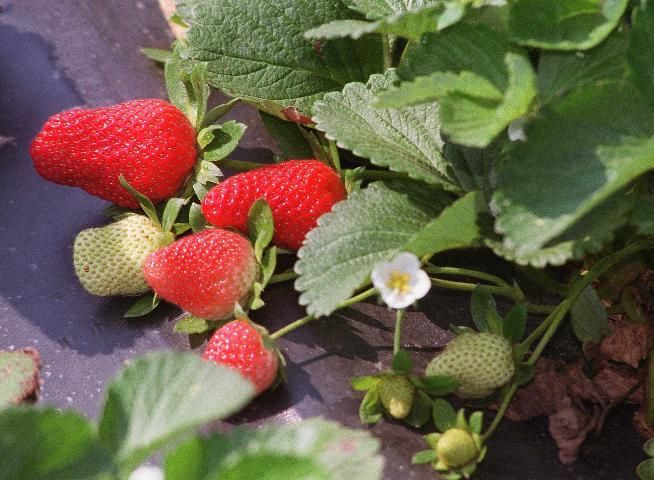
Credit: UF/IFAS Photo by Thomas Wright
Lawns: Lawns start to lose color as the weather cools. If a green winter lawn is desired, overseed with annual ryegrass when daytime temps are in the low 70s, but keep in mind that watering and mowing will be required.
Lawn disease: Watch for brown patch and large patch, fungal diseases that cause areas of grass to turn brown. Since treatment is difficult, prevention with proper cultural practices is key. The disease becomes active when the soil temperature, measured 2–4 in. deep, is between 65°F and 75°F and goes dormant when the weather warms in May. See
- Ask IFAS: Turfgrass Diseases: https://edis.ifas.ufl.edu/topics/turfgrass-diseases
November
What to Plant
Annuals/Perennials/Wildflowers: Pansy, viola, and chrysanthemum create great fall color. See
- Ask IFAS: Annuals: https://edis.ifas.ufl.edu/topics/annuals
- Ask IFAS: Perennials: https://edis.ifas.ufl.edu/topics/perennials
- Florida Wildflower Foundation: https://www.flawildflowers.org/
Bulbs: Bulbs to plant include amaryllis, crinum, and daylily. Plant spider lily in partial shade. Plants produce foliage in winter, and beautiful red flowers emerge in late summer. See
- Ask IFAS: Bulbs for Florida: https://edis.ifas.ufl.edu/topics/bulbous_flowers
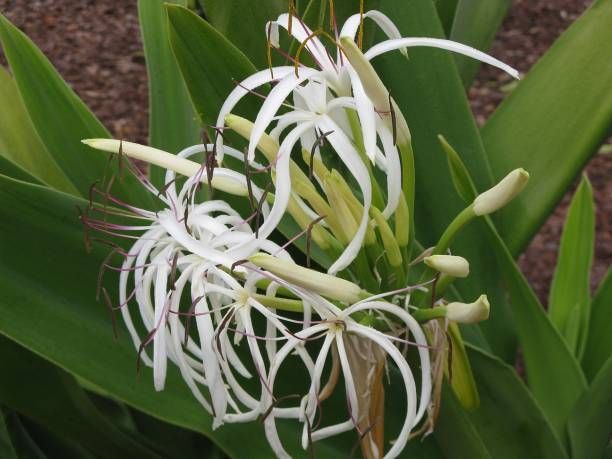
Credit: UF/IFAS
Herbs: A wide variety of herbs like cooler, dryer weather, including cilantro, dill, fennel, parsley, sage, and thyme. See
- Ask IFAS: Herbs: https://edis.ifas.ufl.edu/topics/herbs
Vegetables: A long list of cool-season crops can be planted now including broccoli, cabbage, kale, and lettuce. See
- Ask IFAS: Vegetable Gardening in Florida: https://edis.ifas.ufl.edu/topics/vegetable_gardening
What to Do
Citrus: Protect small citrus trees if freezing temperatures are predicted by watering well at least a day before the freeze. You may also use covers that extend to the ground for protection. See
- Ask IFAS: Lawn and Garden Care: Cold Protection and Chilling Damage: https://edis.ifas.ufl.edu/topics/lawn-and-garden-cold
Scale insects: Apply dormant oil sprays to control scale insects on trees and shrubs. See
- Ask IFAS: Lawn and Garden Care: Pest Management: https://edis.ifas.ufl.edu/topics/lawn-garden-pest-management
Irrigation: Lawns and most plants do not need frequent irrigation in winter. Turn off irrigation systems and water as needed. See
- Ask IFAS: Lawn and Garden Care: Irrigation: https://edis.ifas.ufl.edu/topics/lawn_and_garden_care_irrigation
Flowering trees: Consider planting cold-hardy flowering trees, such as dogwood, redbud, fringetree, and Taiwan cherry, that bloom in late winter and/or spring. See
- Gardening Solutions: Winter-flowering Trees and Shrubs: https://gardeningsolutions.ifas.ufl.edu/plants/trees-and-shrubs/winter-flowering-trees-and-shrubs/
- Florida-Friendly Landscaping™ Publications: https://ffl.ifas.ufl.edu/homeowners/publications.htm
Birds: Make a small brush pile from plant debris in the back of the yard for birds. See
- Ask IFAS: Wild Birds: https://edis.ifas.ufl.edu/topics/wild_birds
Camellias: Add some of the new cultivars for bright spots of color in winter. Disbudding, or removing some buds now, ensures larger blooms later. See
- Ask IFAS: Camellia: https://edis.ifas.ufl.edu/topics/camellia
December
What to Plant
Annuals/Perennials/Wildflowers: Masses of petunia, pansy, snapdragon, lobelia, alyssum, and viola add color in winter. See
- Ask IFAS: Annuals: https://edis.ifas.ufl.edu/topics/annuals
- Ask IFAS: Perennials: https://edis.ifas.ufl.edu/topics/perennials
- Florida Wildflower Foundation: https://www.flawildflowers.org/
Bulbs: Amaryllis can be forced to bloom now or planted outdoors for spring blooms. See
- Ask IFAS: Bulbs for Florida: https://edis.ifas.ufl.edu/topics/bulbous_flowers
Herbs: Some examples of cool-weather herbs include parsley, thyme, sage, dill, fennel, garlic, comfrey, and cilantro. See
- Ask IFAS: Herbs: https://edis.ifas.ufl.edu/topics/herbs
Vegetables: Reliable cool-season vegetables include cabbages, collards, beets, and broccoli. See
- Ask IFAS: Vegetable Gardening in Florida: https://edis.ifas.ufl.edu/topics/vegetable_gardening
What to Do
Poinsettias: Enjoy one of the most popular indoor holiday plants. With proper care, this colorful plant gives weeks of color. See
- Ask IFAS: Poinsettia: https://edis.ifas.ufl.edu/topics/poinsettia
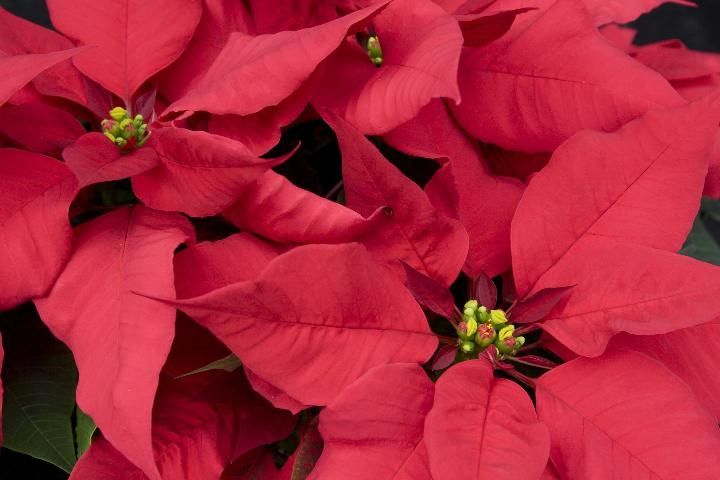
Credit: UF/IFAS Photo by Tyler Jones
Cold damage: Wait until warm weather returns to cut back cold-damaged plants. See
- Ask IFAS: Lawn and Garden Care: Cold Protection and Chilling Damage: https://edis.ifas.ufl.edu/topics/lawn-and-garden-cold
Vegetable garden: Make sure that seeds and transplants are properly spaced for good development of tubers and vegetables. See
- Ask IFAS: Vegetable Gardening in Florida: https://edis.ifas.ufl.edu/topics/vegetable_gardening
Houseplants: Inspect regularly for pests on indoor plants. Keep in mind that adequate light is a key factor to ensuring that indoor plants thrive. See
- Ask IFAS: House Plants: https://edis.ifas.ufl.edu/topics/house_plants
- Solutions for Your Life: Florida House Plants: https://sfyl.ifas.ufl.edu/lawn-and-garden/florida-house-plants/
Soil test: Consider performing a soil test if plants do not perform as desired or if new plantings are planned. See
- Ask IFAS publication: Soil Sampling and Testing for the Home Landscape or Vegetable Garden: https://edis.ifas.ufl.edu/publication/SS494
Compost/mulch: Fallen leaves provide the carbon ingredient needed for successful composting and also make a good mulch. See
- Ask IFAS: Composting: https://edis.ifas.ufl.edu/topics/composting
- Ask IFAS: Lawn and Garden: Mulches: https://edis.ifas.ufl.edu/topics/lawn-garden-mulches
Garden pests: Continue monitoring and treat pests as needed. While cooler weather generally means fewer pests, some populations actually increase at this time of year. See
- Ask IFAS: Lawn and Garden Pest Insects: https://edis.ifas.ufl.edu/topics/garden_pest_insects
What to Do Every Month
- Adjust irrigation based on rainfall and time of year (less often in winter). Ask IFAS: Lawn and Garden Care: Irrigation: https://edis.ifas.ufl.edu/topics/lawn_and_garden_care_irrigation
- Prune off dead blooms and seeds to encourage new flowers.
- Monitor for insects and disease.
- Plant trees, shrubs, and flowering annuals/perennials and water until established.
- Consult the Florida-Friendly Landscaping™ Guide to Plant Selection and Landscape Design at https://ffl.ifas.ufl.edu/homeowners/publications.htm
- Warm Months—Mow lawns at recommended heights: ENH10/LH028: Mowing Your Florida Lawn: https://edis.ifas.ufl.edu/lh028
UF Resources for Gardeners
- UF/IFAS Publications (Ask IFAS/EDIS): https://edis.ifas.ufl.edu/
- Florida-Friendly Landscaping™ Program: http://fyn.ifas.ufl.edu/
- Gardening Solutions: http://gardeningsolutions.ifas.ufl.edu/
- Florida Master Gardener Program: http://gardeningsolutions.ifas.ufl.edu/mastergardener/
- Living Green: http://livinggreen.ifas.ufl.edu/
- UF Books, Flash Cards, Apps, and other gardening resources: http://ifasbooks.ifas.ufl.edu/
- Planting dates and other vegetable gardening information are also available as a free mobile app called "Florida Fresh" or download it from https://floridafresh.ifas.ufl.edu/
Acknowledgements
The author wishes to thank Carolyn Wildes and Mary Derrick for their time and dedication to the Florida Gardening Calendar project.